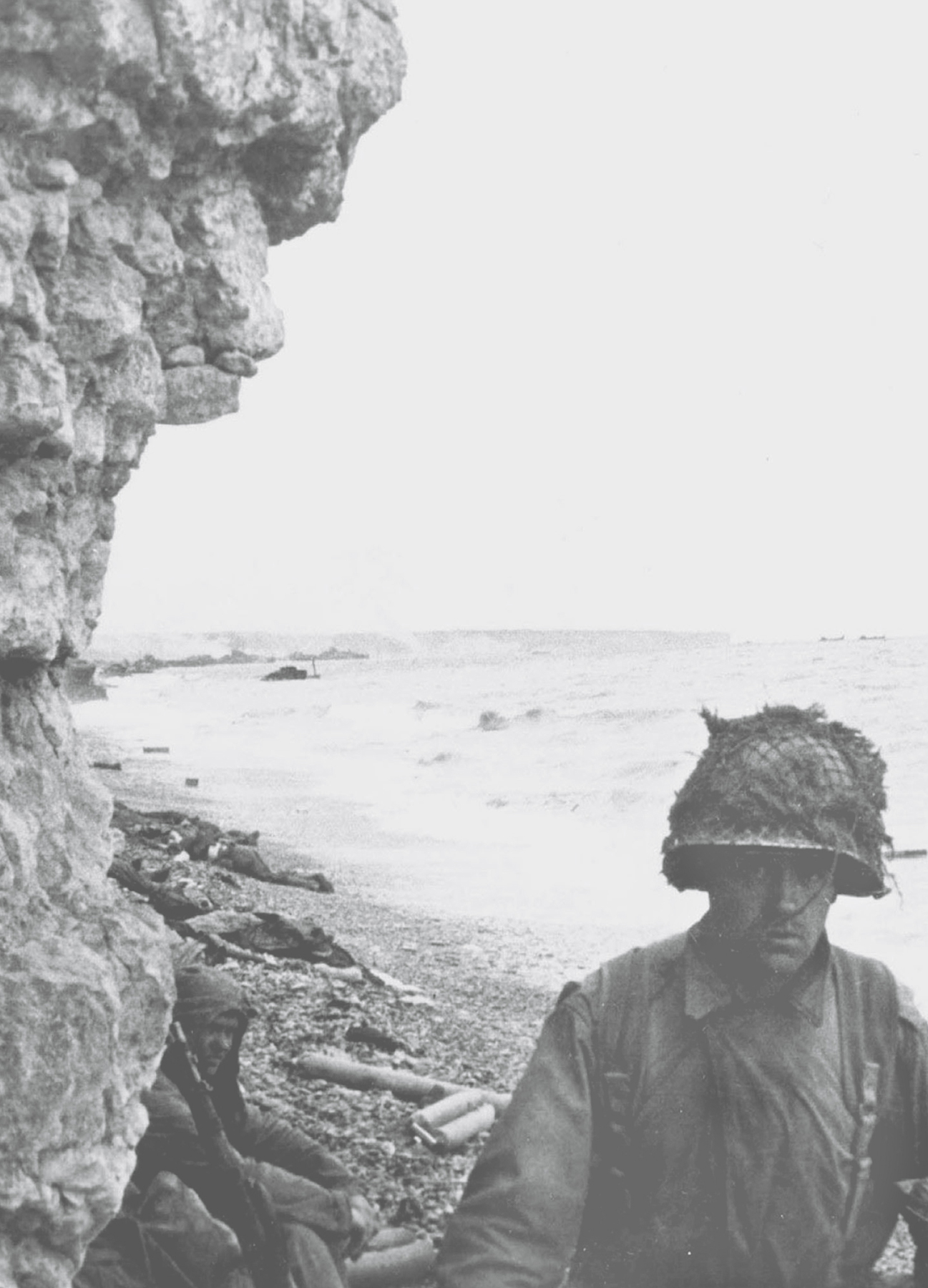
An exhausted American medic on Omaha Beach at around midday. Saving lives on the shoreline was harrowing and dangerous.
The Atlantic Wall was designed to thwart a seaborne landing and all its guns faced the English Channel. Allied planners had realized that if troops survived the initial onslaught and got off the beaches, they could outflank the strongpoints from the rear. If so, they had a real chance of overwhelming them.
Allied warships had enough fire-power to transform the struggle for the beaches. Omaha Beach alone had an eighteen-strong bombardment fleet. But the use of big naval guns risked hitting troops with friendly fire: on Omaha, it was uncertain if and when Admiral Carleton Bryant would order his vessels to enter the fray.
Rommel’s military strategy was to hit hard and fast, counter-attacking the Allies while they were still on the beaches. To execute this he needed the 12th SS Panzer Division and Panzer Lehr. But as noon approached, no one could be certain if Hitler would release them. The Führer still believed, as he had for some time, that there would be a second and larger Allied landing at the Pas de Calais.
Twenty miles east of Omaha, British commandos had an urgent goal that morning: to link up with the glider-borne force that had captured the Bénouville and Ranville bridges, thereby securing the eastern route out of the beachhead. It was impossible to know if these troops were still holding these vital bridges, or if the men themselves were still alive.

An exhausted American medic on Omaha Beach at around midday. Saving lives on the shoreline was harrowing and dangerous.